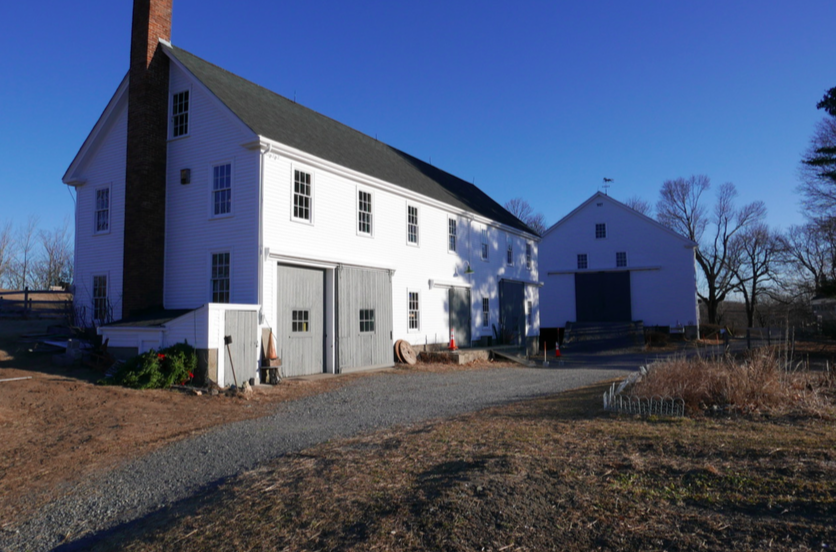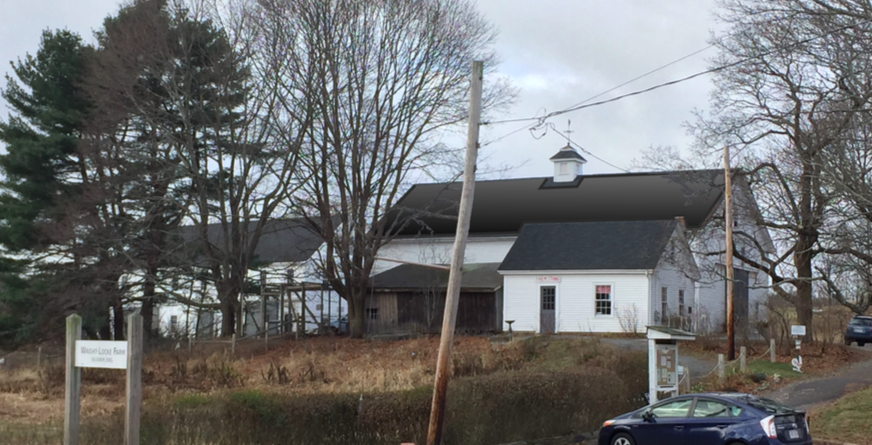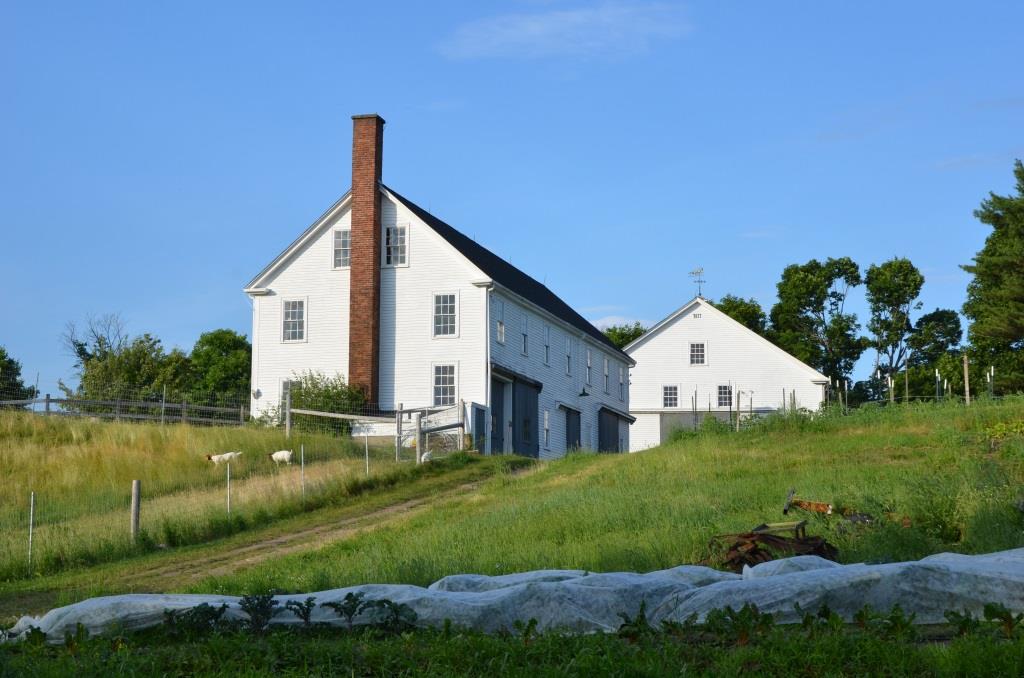Written by Executive Director, Archie McIntyre
As I wrote in our February Blog post, this year many of us at the Farm have been focused on what we can do to lessen adverse environmental impacts here at the Farm and in our daily lives. We’re trying to reduce our reliance on fossil fuels to the greatest degree possible and start the transition to clean forms of energy. It’s an important goal outlined in our recently updated 5-year strategic plan.
It won’t be easy. We, like many others, are reliant on fossil fuels to power and heat our buildings and run our tractors and farm vehicles. And it won’t be cheap – green initiatives require significant upfront capital expenditures to make the switch. The good news is in most cases there is a payback both financially and in knowing that the farm is doing our part to cut our greenhouse gas emissions.
One big initiative we’ve been planning is solar power production at the Farm. It’s something that we’ve wanted to do for a while but have been stymied in our effort. The ideal location for solar panels – near perfect, almost – is on the south facing roofs of the 1827 Barn and Squash House. The catch is that both buildings are listing on the National Register of Historic Places and both are subject to a State Historic Preservation Restriction on the buildings’ exteriors. Modern solar panels on the historic roofs? It’s been a non-starter as recently as a couple of years ago. Many in our community – even committed environmental advocates – just weren’t ready to take that step.
In the past 12 months something changed. Maybe the release this past Fall of back-to-back dire reports from the Intergovernmental Panel for Climate Change (IPCC) and even our own government’s National Climate Assessment shocked many more of us. It seemed like public opinion was starting to galvanize around taking steps – sometimes bold ones – to do our part.
Our Farm’s Conservancy Board voted unanimously to support solar power on the two barns. So too did the Winchester Select Board and Winchester Historical Commission. To get a unanimous vote from our WHS was a big victory. A couple of years ago a unanimous vote from the Commission charged with “protecting” our historic built environment would be unlikely, to say the least.


So, we went for it. As the buildings were subject to a State Preservation Agreement, we had to seek permission from the Massachusetts Historical Commission (MHC). Armed with strong local support and our best arguments why this approach was the least impactful alternative for the overall farm’s historic landscape, we submitted our Project Notification Form to MHC. Much to our disappointment – but I can’t say I was surprised – our application was rejected by the State. We decided to appeal the decision but were disappointed to learn that there was no appeal process for MHC denials. Instead, we turned to our elected state officials to apply political pressure. Thanks to Jason Lewis and Mike Day for leading the effort. Joined by Pat Jehlen and Cindy Friedman, State Senator from Arlington and Mike Barrett, State Senator from Lexington, our collected officials wrote the Secretary of State’s Office requesting a meeting of all parties to reconsider the decision. (MHC is a division of MA Secretary of State).
Next thing we knew, MHC contacted us granting us approval to go forward. No meeting required! It’s nice to have friends in high places. Thanks Jason, Mike, Pat, Cindy and Mike for their help and ongoing advocacy on climate issues.
Now on to the project itself. We have contracted with BlueSel Solar to install 172 – 250-Watt DC Sunpower panels on the two barns. We’ve selected uniform, all black panels that will blend in with the dark grey asphalt shingles on the barns to minimize visual impact. The system is projected to generate 54,000 kWh annually, more than enough to cover our current annual consumption of electricity on the farm. We are now in the project design phase and expect to file for our interconnection permit with Eversource shortly. With permits in hand, look to see work starting this Fall.
One of the side benefits of undertaking a solar project is that it focuses your attention on how much electricity you consume. If you asked me last year how many kWh per year we burned at the Farm I wouldn’t have had a clue. Now I know we consume 30,000 kWh spread over 2 meters. One meter serves all of our Ag buildings – Farm stand, B shed, 1827 Barn, Squash House and greenhouse consuming 22,000 of the total 30,000 kWh. We expect the main electricity hogs are the refrigeration for our cold room in the Squash House and our various fridges and freezers serving our Farm stand.
The Farm House itself historically consumes only 8,000 kWh. But that is likely to change in the coming months as we undertake our next major climate focused initiative: installing electric air source heat pumps to replace our oil-fired furnace to heat the house. As part of the Arlington/Winchester HeatSmart program, we will be converting over to fossil free heat, powered by our own on-site solar. Talk about a win-win!
Doing the math, the Farmhouse ASHP system it will most likely consume much of the excess electricity generated on-farm and we still have to heat and power the All Seasons Barn. We’ve started to look at where, specifically, we’re drawing our power and what we can do to cut our electrical consumption. We’ve installed a new Sense Monitor https://sense.com/ that uses AI to measure the actual load of all fixtures drawing power. By placing sensors between the meter and main circuit breaker panel, Sense learns over time the electrical signatures and power draw of each appliance and light bulb enabling us to make informed decisions to replace inefficient devices and consume less power.
We hope that we can conserve enough power from our current inefficient operations so that enough electricity is left over from our solar panels to serve the electrical needs of all farm operations – including the All Seasons Barn.
In this era of rapidly accelerating climate change with dramatic negative impacts to the environment and human health, it is becoming increasingly clear that we all must take actions, however small and localized, to mitigate adverse climate events. Nowhere is this more evident than on a small, diversified farm that is impacted by rapid shifts between oppressive heat and drought and torrential microbursts dropping inches of rain in just hours. Last summer, many Massachusetts farms had to cease operations due to flooded out fields and ruined crops. These conditions will only accelerate in coming years.
Wright-Locke Farm, with its mission of community involvement and education, is an ideal place to showcase small-scale initiatives to combat climate change. By generating approximately 54,000 kW of solar power on our two barns, we can effectively eliminate our reliance on fossil fuels to power our electrical and heating needs on our farm. Someday, this could even extend to innovative electric powered tractors/cultivators. We hope the educational value of this initiative to all members of our community will be significant.

